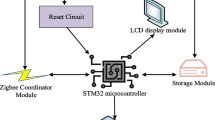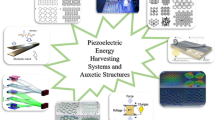Abstract
Power cannot be efficiently transmitted over long distances using conventional wireless transmission. Although increasing charger power effectively improves charging efficiency, safety concerns include mobile phone heating, long-term health damage caused by electromagnetic waves, and interferences on other precise instruments. This study proposed a remote wireless charging system that utilizes mechanical movement design in zoom lenses to maintain wireless charging system performance and perform charging operations from different positions in a room through the movement between lens groups. Moreover, the Taguchi method was applied in optical design software to identify the optimal factors for performance improvement. The wireless light charging system was optimized using the Taguchi method. In addition, optimization of curvature, thickness, and material were proposed. Three focal lengths were optimized through 18 sets of experimental data to reduce the spherical and comatic aberrations; and modulation transfer function value was improved to enhance the performance of the remote wireless light charging system. The remote wireless light charging system was designed to be used in an indoor space. In general, the system is installed on the ceiling, and mechanical movement function is enabled for the lens. Moving the lens changes the focus of the system. This allows the charging light source to change its original light path and generate a new focal point. The system features three zoom positions: 3 m from the ceiling to the floor, 2 m from the ceiling to the desktop, and 1.5 m from the ceiling to a person standing with a mobile phone. This allows the wireless light charging system to focus on the mobile phone receiver for charging in every corner within the indoor space. The wireless charging system features three focal lengths; the field of view (FOV) values are 0°, 24°, and 34°; the total length of the system is 635.45 mm; and the size of the spot diagram is < 12.96 mm. Testing the system revealed that in terms of \( {\text{F}} - \theta \), the control was < ±5%; the performance of the relative illumination was more than 90%, the modulation transfer function reached > 20% at various FOV angles at a spatial frequency of 80 lp/mm; and the lateral color was < ± 2 μm. A photodiode with an area of 12.0 mm was used as the receiver, and energy could be effectively received when the spot size was greater than or equal to the receiving area.

























Similar content being viewed by others
References
Achtelik MC, Stumpf J, Gurdan D, Doth KM (2011) Design of a flexible high performance quadcopter platform breaking the MAV endurance record with laser power beaming. In: 2011 IEEE/RSJ international conference on intelligent robots and systems, pp 5166–5172. 10.1109/IROS.2011.6094731
Arbabi A, Horie Y, Faraon A (2014) Planar retroreflector. In: 2014 conference on lasers and electro-optics (CLEO): laser science to photonic applications STu3M.5, pp 1–2
Bennett HB (1995) DOD and Navy applications for laser power beaming. In: Proceedings of the0 SPIE 2376, Laser Power Beaming II, San Jose, CA, United States
Buettner M, Prasad R, Sample A, Yeager D, Greenstein B, Smith JR, Wetherall D (2008) RFID sensor networks with the intel WISP. In: Proceedings of the 6th ACM conference on embedded network sensor systems (SenSys’08), pp 393–394. https://doi.org/10.1145/1460412.1460468
Chabalko MJ, Shahmohammadi M, Sample AP (2017) Quasistatic cavity resonance for ubiquitous wireless power transfer. PLoS ONE 12:1–14. https://doi.org/10.1371/journal.pone.0169045
Chan VWS (2006) Free-space optical communications. J Lightwave Technol 24:4750–4762. https://doi.org/10.1109/JLT.2006.885252
Ghobadi M, Mahajan R, Phanishayee A, Devanur N, Kulkarni J, Ranade G, Blanche PA, Rastegarfar H, Glick M, Kilper D (2016) ProjecToR: agile reconfigurable data center interconnect. In: Proceedings of the 2016 ACM SIGCOMM conference (SIGCOMM’16), pp 216–229. https://doi.org/10.1145/2934872.2934911
Griffin B, Detweiler C (2012) Resonant wireless power transfer to ground sensors from a UAV. In: 2012 IEEE international conference on robotics and automation, pp 2660–2665. 10.1109/ICRA.2012.6225205
Hoffert E, Soukup P, Hoffert M. (2004) Power beaming for space-based electricity on earth: near-term experiments with radars, lasers and satellites. In: Solar power from space 567: 195. Bibliographic code: 2004ESASP.567.195H
IEC 60825-1 (2001) Safety of laser products—part 1: equipment classification, requirements and user’s guide. International Electrotechnical Commission. https://shop.textalk.se/shop/ws26/40626/files/full_size_-_for_start_page_banner/iec60825-1%7Bed1.2%7Den.pdf. Accessed 21 Apr 2019
IEC 60950-1 (2005) Information technology equipment: safety—part 1: general requirements. International Electrotechnical Commission. https://webstore.iec.ch/publication/4020. Accessed 15 May 2019
Kurs A, Karalis A, Moffatt R, Joannopoulos ID, Fisher P, Soljacic M (2007) Wireless power transfer via strongly coupled magnetic resonances. Science 317:83–86. https://doi.org/10.1126/science.1143254
Liu YH, Young SJ, Hsiao CH, Ji LW, Meen TH, Water W, Chang SJ (2014) Visible-blind photodetectors with Mg-doped ZnO nanorods. IEEE Photon Technol Lett 26:645–648. https://doi.org/10.1109/LPT.2014.2301845
Liu Y, Qin Z, Zhao C (2015) AutoCharge: automatically charge smartphones using a light beam. https://pdfs.semanticscholar.org/6573/e1379127c4f3c26eee24f10d6412a0657ed2.pdf. Accessed 12 Mar 2019
LtdHebeiI.T. (2001) (Shanghai) Co.2001.TEC1-12706. http://peltiermodules.com/peltier.datasheet/TEC1-12706.pdf. Accessed 5 Mar 2019
NASA (2004) Beamed laser power for UAVs. https://www.nasa.gov/centers/dryden/pdf/120329main_FS-087-DFRC.pdf. Accessed 16 Feb 2019
Sample AP, Meyer DT, Smith JR (2011) Analysis, experimental results, and range adaptation of magnetically coupled resonators for wireless power transfer. IEEE Trans Ind Electron 58:544. https://doi.org/10.1109/TIE.2010.2046002
Sony (2011) Electret condenser microphone. https://images-na.ssl-images-amazon.com/images/I/714s6fjypPS.pdf. Accessed 18 Jan 2019
Vikram I, Bayati E, Nandakumar R, Majumdar A, Gollakota S (2017) Charging a smartphone across a room using lasers. Proc ACM Interact Mob Wearable Ubiquitous Technol 1(1):143-1–143-21. https://doi.org/10.1145/3161163
Acknowledgements
This study was supported in part by the Ministry of Science and Technology MOST 108-2221-E-150 -022 -MY3 and National Formosa University 107AF06.
Author information
Authors and Affiliations
Corresponding author
Additional information
Publisher's Note
Springer Nature remains neutral with regard to jurisdictional claims in published maps and institutional affiliations.
Rights and permissions
About this article
Cite this article
Yen, CT., Hong, CY. Integrating optical design with Taguchi method in a remote wireless light charging system. Microsyst Technol 28, 353–368 (2022). https://doi.org/10.1007/s00542-020-04852-3
Received:
Accepted:
Published:
Issue Date:
DOI: https://doi.org/10.1007/s00542-020-04852-3




